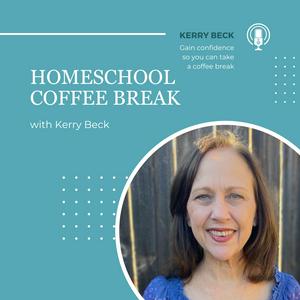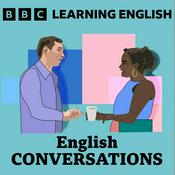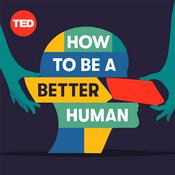Verfügbare Folgen
5 von 170
- 166: From Math Anxiety to Math Success with CTC MathDreading math time every day? Feeling unqualified to teach it or overwhelmed by the daily battles? In this conversation with Nadim from CTC Math, we're exploring how to shift from being the teacher to being the coach—and why that makes all the difference for busy homeschool families.Nadim shares honest insights about building math independence, the truth about screen time and dopamine, and why short explanations with lots of practice work better than long lectures that confuse kids.In this episode:✅Why 5-minute explanations with 25 minutes of practice beat 30-minute lectures every time✅The truth about screen time, dopamine, and what's really damaging our kids✅How adaptive questions meet your child at their level and bring them up (instead of widening the gap)✅The freedom of K-12 access, anywhere/anytime learning, and a 12-month money-back guarantee✅How CTC Math helps overwhelmed or unqualified moms outsource the teaching while staying the encouragerReady to end the daily math battles? Try CTC Math with their free trial at CTCMath.com—no credit card required, and full memberships come with a 12-month money-back guarantee!Recommended Resource:Free trial at CTCMath.comNadim El-Rahi serves as the COO and CMO of CTCMath, where he leads product development, marketing, and family engagement for one of the world’s most trusted online maths programs. With a background in mathematics, economics, and education, he works closely with homeschool parents to understand their day-to-day challenges and build tools that genuinely make learning easier. Nadim is passionate about helping kids develop confidence, mastery, and a love of learning through clear instruction and self-paced progression. Representing a program used by tens of thousands of families, he brings both practical experience and a heartfelt commitment to supporting parents in their mission to help their kids thrive academically and personally.Follow Nadim and CTCMath on their social media accounts:FacebookIGTikTokYouTubeShow Notes:Welcome to Homeschool Coffee BreakHey everyone, Kerry Beck here with Homeschool Coffee Break, where we help you stop the overwhelm so you can take a coffee break. I actually have coffee. Nadim's my guest today. He has coffee, too. We are ready.Y'all don't know this—Nadim represents CTC Math, so it is 3 o'clock my time in the afternoon. He's over in New Zealand, so he's definitely getting his cup of coffee. I guess I'm getting my afternoon coffee, because it's morning time over there when we are recording this. I appreciate you just getting up and being available for us today.We're going to talk about math, because I know that's a struggle for a lot of moms. They're not sure what to do, because if they're not a math person, they're just like, oh, here comes my math time.Meet Nadim from CTC MathBefore we do, Nadim, could you just tell people a little bit about yourself with maybe CTC math?Nadim: I appreciate that, Kerry. Well, I'm Nadim. I've been working at CTC Math for over 13 years now. I'm the COO here, with a special interest in mathematics and education, especially childhood all-rounded education, I would say.CTC Math is an online math curriculum from K-12 with short, concise, to-the-point video tutorials.When Math Time Feels OverwhelmingLet's just begin our time. We're going to get straight to it with math and some of the struggles that moms have, because some of them are overwhelmed, but some people just feel unqualified to even teach math. We either have the overwhelmed mom, we have the unqualified mom. What would you say to a mom who just dreads the part of her day that has to do with math?Nadim: Great question, Kerry, and I would say that you're not alone. Math anxiety is common, even among parents who loved math at school.I think we can shift the thinking, especially in today's day and age. There's a lot of outsourcing that can occur, and we can outsource those subjects that we don't particularly feel comfortable teaching, or want to teach, and then our goal as homeschoolers isn't to be the teacher as such, but to be the coach or encourager.I think kids build independence through this process, and parents can really focus on guiding, rather than planning every step or teaching every concept.That's such an important thing for each of us to decide. What are we going, as moms or dads, what are we going to actually teach, and then what can we use as resources? I'll be really honest. I loved math in high school. I was a math minor in college, and then we moved forward 20 or whatever years to homeschooling my kids in math.When we got to high school math, I was like, I don't really like math as much as I used to. I loved teaching the elementary, I taught that and everything, but sometimes I got to the point—now, this was 20 years ago—I had to find things that would work with my kids and with me.Building Habits and Routines for ConsistencyI also had to build in habits and routines so that it would become consistent. From your experience, can you give us any habits or routines that might help kids stay consistent in their math without stressing through the whole homeschool time?Nadim: Yeah, for sure. I'm a big fan of being consistent and implementing routines, but I will say each child is unique, and it's important to implement what's important for your child, knowing your child and their needs.But I would generally say that it's better off having a little bit of math every day, rather than a whole day worth of math. You might integrate a short regular session, say 15 to 20 minutes long, more frequently, perhaps 4 or 5 days a week, rather than longer sessions on 1 or 2 days a week.It is important to have that consistency, that time, and that time may alter on different days of the week, but you know in advance, or your children know in advance, they will be doing math at 10:30 on Wednesday, for instance.I would also say that with consistency, there has to be structure. I heard a lot of people talk about rewards. I don't know if I'm a big fan of rewards. I don't know if rewarding your children for doing something that they should be doing is sending the right message.But what I would say is that you can flip it. If there's something that they want to do, or something that they're requesting, or something that they're asking for, make sure that they do their math, or whatever chore, or whatever they're putting off, to unlock that thing that they wish to do next. That just teaches them a bit of order in life.Again, each child's unique, your family situations are—you know your children best.I think you're becoming my new best friend, because I love that, because I'm not like, yes, I think kids need to do things because they're expected, and that's just part of life and learning some self-discipline as well. Yet, you can build it into, you gotta finish all this, and then you go outside and play, or whatever the thing happens to be.Supporting Busy ParentsI know moms get busy a lot of times, but yet they really want to support their kids in math, but they're busy with other subjects, or let's just face it, cooking 3 meals a day and trying to balance it. How do you encourage parents to support their kids in math in that situation?Nadim: I think there's a few things here. I think we need to encourage independence. And how do we do that? Well, we need a structure or a framework for that. We need a system for them to use and adapt that will promote that. If the current system is not creating that environment, you may need to look at alternatives.I'm going to talk a little bit about CTC Math here, because it really does lend in with the busy parents. If you've got video tutorials that explain each and every concept, if you've got automated reporting and questions and grading, if you can set tasks in advance, then receive the reports to ensure the accountability is there, then checking math doesn't become a 30, 60-minute exercise. It becomes a 5-minute exercise.You're just there to add the polish, to add the encouragement. Perhaps if there's a certain concept that they're struggling with, show them how to unlock or view additional material.It's really about that structure. If you've got the structure in place, it allows for independent learning. Now, at the same time, if they go quiet for weeks, you need to check in, because sometimes they've gone, well, if I don't bother mom or dad about this, they're not going to bother me about this. They're very clever. Our kids are super clever. We also need to have those frequent check-ins when they're not checking in with us.Building Independence and Critical ThinkingI love that independence work. You may not know this about me, but I teach moms about leadership education and learning independence and critical thinking skills, and that they eventually—I mean, okay, a 5-year-old may need a lot more help than a 15-year-old, but by the time they're in high school, they should be working independently, and they should even be helping plan their week, I believe, so that they can actually be able to launch into adulthood and know how to live a life.I love that independence, and I did not know about CTC Math back in 2004, 5, 6, when my kids were teenagers. So I did go find something that helped them, and that would do those short little lessons, because that's what would help be consistent in there as well.You want moms to be intentional, but they don't want to—this is the other thing with leadership education, you don't want to just be checking off a bunch of boxes and moving forward, because you need to think about the full realm, and are you really raising your child educationally and intentionally? How would that translate for homeschool moms or families so they're not just checking off the boxes?Every Moment is TeachableNadim: I think if you're going with the mindset that everything is a teachable moment, that really resets your thinking. Even the good is teachable. The bad is great, because that's teachable.I'll share a bit of a personal story. My eldest daughter, she's 9, and she is very smart, and has a great sense of justice, but to the point where it overrides charity. She thinks that if someone else is being mean, she has the right to be mean back, because that's what they deserve.We were having this conversation, and it really offended my wife and I that we've got a child who's not the kindest. But we both realized that this is actually great, because no child is perfect, everyone has character defects. I wasn't working on my character defects until my 20s.But this ability to see that you can help your children as soon as possible, and I think that's very much not checking the box. If we go in with this attitude of teachable moments, that is great. That, of course, extends to math as well.I would say that checking a box is very easy in math. Even we think, if we get a long 40-minute lesson, and we get a 20- or 30-minute explanation with just 10 minutes of practice, the 5-minute explanation with that 25 minutes of practice, or 35 minutes worth of practice, is far more effective.Often, the long, drawn-out explanation confuses the child. Less is more.We can have a mastery approach in our teaching of our children, where they build up their skill, but then incorporate spiral review, perhaps on a Thursday or a Friday, and have that combination going. But if we teach too many concepts at once, if we don't go with that mastery explanation, the children are drowning in it.Again, that's not to dismiss spiral learning. You can have the spiral review once a week.I love that, and I think that's—we think like moms. They start talking and teaching, and they're thinking, the more I talk and the more I teach, the more my kids are going to learn, and that is not happening. I love this idea of a 5-minute explanation, and then let them put it into practice.I'm a big believer in mastery, especially in math, because if they don't master a concept, you don't just keep checking the boxes and moving on to the next concept. You've got to make sure they understand it, because it all builds on each other. I just thank you for sharing that. I think that is so important, and the idea of the spiral and the review of past concepts as well.Real Stories of Changed ConfidenceI want to talk about CTC, but before we do, can you just share a story of a homeschool family, maybe, who saw some real change in their child's math confidence or results, and what made that difference?Nadim: Yeah, we've got quite a few stories, actually. Amber springs to mind. She's been using CTC Math with her nine children for quite a while now. But I think the theme that comes through, and we've got countless testimonials on our website, if you go to our website and click what others say, you'll be forever scrolling.But I think that the consistent theme that comes through is that the daily battles have not completely ended. They never do. We've always got daily battles. But certainly when it comes to math, they're not what they used to be, and the tears are no more.It can become incredibly stressful when you're trying to teach something and it's just not getting through. I think that stress builds up between parent and child over time, and the starting point of that stress on a given day is at a higher point.I think removing those daily battles comes through, and they're real stories that we consistently get. Our mission is to have a positive impact on as many families as possible through the enjoyment and learning of math. We hope that we continue to help confidence grow in these children.Well, I personally have not used it because my grandkids, they're doing other—they're little—but the families I talk to that use CTC Math, it is amazing. They're just like, oh no, this is what we're using, and we are going to keep going.Learning at Their Own PaceI know one of the things, and I like this, is that you want to let children learn at their own pace through the videos and the questions and everything. How does that structure of letting them learn at their own pace support both the parent and the kids in a homeschool?Nadim: Well, the heavy lifting's done for you, so no explanations are required. Those video tutorials are there, so you don't have to do that heavy lifting.I would also say that whether the child's 5 or 18, they're able to access the material themselves. If they can't read, the questions are read out to them. They watch a video tutorial, get a short, concise explanation. They jump to the interactive questions that are adaptive in nature. They change in difficulty level based on the student's ability, your child's ability. So they go up.Sometimes what happens when we learn from a textbook or a non-adaptive material is that the child's ability might be here, and the questions are here. The questions get gradually more difficult, but the child's ability doesn't improve, because they're just not getting it, so the gap widens.What's really important is that the questions meet the child at their level, and bring them up. That's what we do with the adaptive style questions.There are also—we for sure promote pen and paper math, so we want children to have pen and paper in front of them. There's printables that they can have, and we've got that spiral review with the weekly revisions and the diagnostic tests.There's also a whole bunch of great features that automate this whole process and help busy moms with that structure. You pick and choose the tools that best suit your family's needs. That's really important. You don't go in using all the tools of CTC Math, because it would be overwhelming.But you pick the ones that you need, whether it's setting tasks, and you can set an entire year's worth of tasks through a couple of clicks of a button. You can create custom worksheets. You can choose and select the various reports that you want. You can use the diagnostics to go back and fill those gaps.Math is a building block. If there are holes, we need to go back and review them. Because you have access from kindergarten to calculus, you can identify and pinpoint previous lessons. But at the same time, if your child's doing really well, why hold them back? Let them go on, let them continue at their own pace.Yeah, that's what I was thinking. It sounds like such a great fit, because some kids are really going to struggle, and they need those questions brought down a little till they actually understand the concept, and then other kids are getting it like this, and they just need to move on forward.Addressing Screen Time ConcernsI know this program's all online, so if you have parents, maybe, that are like, I'm not sure about an online math program, what would you say to them? What are some benefits? I know I work with some parents, they don't want their kid on the computer all day long, but there are, like you said, you pick and choose where mom's going to actually be teaching face-to-face, and then where kids are. What would be the benefits of doing an online program?Nadim: Yeah, and Kerry, I'll start by saying that my kids are 9, 7, and 5. No one has an iPad, no one has their own personal device, no one has a computer, and no one will be getting any of those for some time.We do have a computer in a public space that every family member has access to and uses. I am very strongly against the social media for my children, and anything that is addictive in nature. Anything that was built to be addictive.I don't know if it's the screen time that impacts the child. I don't know if it's looking in front of a screen. I think it is, if it's for hours and hours and hours, don't get me wrong. But I think the thing that's doing the most damage is what's impacting the kid's dopamine levels.Everything is built to be addictive these days. Even I see a lot of ed tech companies now switching and going, oh, let's build avatars, let's unlock missions, let's have stars and this and that, and let's play with the kids' dopamine levels so that we keep them on. There's language programs out there for kids and adults that are a perfect example of this.I would say that I am concerned too. CTC Math is built to improve student outcomes. It's not built to keep your child on the screen any longer than they need to, to learn that concept and understand that concept.We do have some levels of encouragement, but it's not to the level of keeping them hooked. That is really, really important. Anything that is addictive should not be placed in front of our children.I'll give you a very simple example as well. Kids' attention spans are getting shorter and shorter and shorter. If we go back to when I used to watch TV, which wasn't that long ago, I would have to sit through commercials. I would have to sit through some boring commercials, while watching one episode.Now, kids, through online streaming, can watch an episode commercial-free. The other thing was, I'd have to wait one whole week to see the next episode. So there's some resilience, there's some patience built in there. Perhaps TV wasn't the best thing. It wasn't as bad and as addictive as it is now.Now, children can watch an entire season in a day! What took us 6 months? They're consuming in a day or two. This is the real problem. This is what we have to look at and really assess.Now, I would 100% respect anyone that doesn't think screen time is a good fit for their children, and I think pen and paper style math is a great way. But then, it comes with its—who does the teaching? Because the child cannot learn reading a textbook. It does not work. You can't read math and absorb that information.The other thing is, with technology these days, the things have advanced, so these adaptive questions are very powerful, because they really do build confidence. They're not seeing anything too difficult, and they're not seeing anything too easy. So, their attention is constantly switched on, and they're constantly learning at the same time.A lot of pros and cons. We gotta balance these things out, we gotta take it all in, and we gotta make an evaluation for our family.The Anxious Generation and Screen TimeYou just spoke my language, especially when you brought up dopamine and the addiction, and I read a book I guess this summer, called The Anxious Generation. I mean, there are a few little things I didn't agree with them, but so much—I was a child of the 60s, and when you see that playground, and the kids are hanging off these metal things that our parents—parents today, or helicopter parents, they're like, we never let them, gotta have a safety net.It was so good. That's a whole other conversation, but I do want to just reiterate, we need to be careful with what we put in front of our kids and screens.I was a little concerned, because I have an older granddaughter, not a teenager, but for some reason, I thought my daughter had said, oh, I think we might give her a phone, and in my head, I'm like—and I brought the conversation up this summer, and she was like, oh, no, Mom, and we're not having social media either. I mean, they need to be almost out of the house, which gave me a lot of peace and comfort, because I just was like, so it just made me feel good that we were all on the same page.That's a whole other story, but thank you for bringing up the dopamine. I do think there's a difference, and I interviewed someone else, and she was saying all screens aren't bad. It's the ones that are addictive, the ones that are gamifying everything, and that's the thing. She started talking more about the brain and the mind and all of that kind of stuff, which made me remember that online teaching can be good, and it can be a tool, and it can help lessen the overwhelm of everything that a mom's doing, because you can't do it all, even though people may say that.The Freedom CTC Math ProvidesThe other thing I've been curious about, CTC talks about giving families freedom to sort of fit math into their unique schedule, handle catch-up or advancement, the kid that's struggling, the kid's moving ahead, and then monitoring. Can you just tell us a little bit about how that works?Nadim: Yes, so access from kindergarten to calculus, so your children can go in to any grade level that they need help with. That's super important for flexibility, because you don't want them at a level that they're not ready for.Also, you can do it anywhere, anytime. We hear of families who are sitting in the doctor's waiting room with their device, and watching the video tutorials with some headphones, and completing the questions. We're actually very popular in the RV community.RV families will always have an internet connection, because they're always on the road. All you need is an internet connection. There's countless testimonials, and countless photos of people doing CTC Math in the greatest places, in front of nature.It really is, and if you miss a lesson, or you want to catch up on the summer slide, it's always available for you. And again, if they're doing really, really well, move them ahead. Just continue on to the next lesson.Parents can adjust tasks and skip topics once they're mastered, and there's real-time progress. You also have access—a family plan gives you access to all your children. There's no cap on it, as long as they live under your home. So that makes it very easy.That sounds great. If a family is interested, they just want to be introduced to CTC Math in their homeschool, what would you suggest for them?Nadim: Yeah, two things. One, visit our website, and there's a free trial. No commitment, no credit card. It is a light version, a guest version, and that's because, two, a full membership comes with a 12-month money-back guarantee, so there's no questions asked.If you try CTC Math, and it doesn't work for you and your family, send us an email, give us a call, we'll refund your payment, no questions asked. This is because we do not want you using a curriculum or a program that is not benefiting your child. We don't want to be a roadblock for you to move on to something else.We asked parents, what's your biggest concern when selecting math curriculum? And it was that it won't work, and I'm stuck with it for the entire year. It shouldn't be like that. We need to support the greater cause, we need to push the cart in the same direction.I don't say CTC Math is 100% fit for everyone, because each child is unique and different, and there's plenty of wonderful tools out there. There really is. It's amazing. Across all subjects. So there's something more important at play, and we would say that we believe that CTC Math certainly works for the vast majority. But please reach out if it's not for you.That's so good. Remind everyone what your website is, and we will put that in the show notes as well.Nadim: Yeah. CTCMath.com. Cut through curriculum. CTCMath.com.That is awesome. Thank you so much for being here today. Just in closing, is there anything that you would like to leave us with?Nadim: Keep up the good work. It's amazing that we are the primary educators of our children. That is so important. It's something so special. Keep up the good work.That sounds great. Thank you, Nadim. I really appreciate you spending time with us today.Ready to end the daily math battles? Try CTC Math with their free trial at CTCMath.com—no credit card required. Full memberships come with a 12-month money-back guarantee, no questions asked. Visit the website today and see how short video tutorials, adaptive questions, and automated grading can transform math time in your homeschool!--------29:06
- 165: What Is Advent & How to Celebrate It with Your FamilyEver wondered what is Advent beyond just lighting candles or opening little doors on a calendar? Advent is about arrival and anticipation—a sacred season that prepares our hearts to celebrate Christ's first coming while also anticipating His second coming.In this episode, we're exploring the rich history of Advent from the 5th-6th centuries and practical ways to make space for Christ in your family this season. Let’s face it …the real crisis isn't a busy December—it's a Christ-less Christmas.In this episode:✅What is Advent and how you can celebrate as a family✅Why the first 2 weeks focus on reflection while the last 2 focus on celebration✅How to prepare room in your heart, schedule, and family for Jesus (not just more activities)✅Why hope in Jesus is confident expectation, not just wishful thinking✅Practical ways to anticipate Christ's coming like you'd prepare for honored house guests✅Beautiful traditions using Advent candles, scripture readings, and family devotionsReady to make Advent meaningful? Use the Advent resources below to help your family prepare room for Jesus!Recommended ResourcesChristmas Celebrations Bundle (SAVE $10 with code: DEC10 )Advent Tool Kit (SAVE $10 with code: DEC10 )Star of Bethtlehem ebookChristmas Celebrations ebookChristmas Around the World ebookJotham’s JourneyO Come, O Come EmmanuelShow Notes:What Is Advent?Advent means arrival and anticipation. We're going to talk more about this in Tuesday's class, but I want to give you some background.Back in the 5th-6th centuries, the church celebrated Advent in a specific way. The first two weeks of Advent, the church would reflect on the Second Coming. Disciples would chasten their hearts, confess sins, and spend time hoping for the quick coming of the Lord. It was a time of reflection and fasting.The last two weeks of Advent would then transition to focus on the first coming—Christ in the manger. This was a time of feasting.Advent and Christmas are never held as a full re-enactment of the life of Christ but point to our place between the Resurrection and Second Coming.How Do You Walk Through Advent?I'm going to share ideas over the four weeks of Advent, but today I want to talk about making space for Christ.There's a book called "Make Space for Christ" by Susan Narjala, and the concept comes from that line in the Christmas carol: "Let every heart prepare Him room." But how do we actually do that?The Crisis of a Christ-Less ChristmasWe face a crisis of a Christ-less Christmas. We forget the guest of honor—Jesus. We get so wrapped up in gifts, we forget to unwrap the greatest gift of all.The antithesis of fearing God isn't offending Him or denying Him or omitting Him. It's forgetting God. Luke 3:4-6 talks about preparing the way of the Lord.Anticipation Is KeyThink about how you prepare for house guests. It takes time, right? So does preparing for or anticipating the feast of Christmas.You clean the house, you clean the bedrooms. You make sure your guests will be comfortable. You get rid of unnecessary items in the guest room. You declutter. In the same way, we need to confess sin and make room in our hearts.Psalm 27 says, "One thing I seek, to dwell in the house of the Lord all the days of my life to meditate..." Sometimes you need to rearrange the room if necessary—get rid of toys, add water bottles, clean towels. Rethink, rearrange, and refocus so Christ has room in your family.We're anticipating the second coming of Christ as well. Growing up, we would read the Christmas story on Christmas Eve. Now I do Advent candles each week along with Advent Bible reading or Jotham's Journey.When you greet and treat guests with love, it's not because you have to. You get to. You want to.Is There Room for Jesus?Is there room in your heart for Jesus? Is there room in your schedule for Jesus? Is there room in your family for Jesus?We need to re-prioritize. We need to respond in AWE to God's amazing love. Matthew 6:33 says, "Seek first the kingdom of God."Hope: The First Candle in AdventIn America, we use the word "hope" to mean "wish." But in Jesus, hope means expecting Him—confident expectation. It's not just a wish that God is here or that Jesus saves. It's confident expectation.Think about the line from O Holy Night that you could use for copywork, dictation, or a short discussion about "thrill of hope":O Holy Night! The stars are brightly shining It is the night of the dear Savior's birth! Long lay the world in sin and error pining Till he appear'd and the soul felt its worth. A thrill of hope the weary soul rejoices For yonder breaks a new and glorious morn!We're still waiting for His coming again—the second coming. We're still weary from the world, from personal issues.Isaiah 40:31 talks about waiting on the Lord. Think about O Come Emmanuel—Israel hoped and waited 400 years. You can find more about this at howtohomeschoolmychild.com/o-come-o-come-emmanuel.Waiting on GodWe wait on God. I have a family devotion story about this. I'm still waiting on God to move in Steve's life.Kid-Friendly IdeasYou can make this kid-friendly using fabric or plastic figures. At Faith Passages, we actually acted it out with the kids.Ready to make Advent meaningful in your home? Download the free Advent resources and O Come Emmanuel study at HowToHomeschoolMyChild.com/o-come-o-come-emmanuel to help your family prepare room for Jesus. Learn practical ways to celebrate hope, peace, joy, and love while pointing your children to both Christ's first coming and His return!--------23:08
- 164: Advent Family Ideas for Busy Homeschool Moms with Jamie SuelFeeling overwhelmed by the busy holiday season and not sure how to make Advent meaningful for your family? In this conversation with Jamie Suel (artist, former missionary, and mom of five grown kids), we're exploring advent family ideas that create space to encounter God instead of just adding more activities to your already-full schedule.Jamie shares honest wisdom about slowing down, renewing your mind when life feels chaotic, and using beautiful visual reminders to help your kids focus on hope, peace, joy, and love throughout December.In this episode:✅Advent family ideas for creating physical and mental space to prepare your heart for Jesus✅Why traditions aren't just activities—they're cornerstones that help kids remember what matters✅How to interrupt negative thought patterns and renew your mind with God's truth (Romans 12:2)✅Beautiful Advent card traditions using hope, peace, joy, and love to teach kids to wait well✅Why your kids don't need you to be perfect—they need to see an imperfect person walking with GodReady to make Advent meaningful this year? Check out Jamie's beautiful Advent cards and devotionals at her Etsy shop or jamiesuel.com—perfect for creating visual reminders that bring your family back to Jesus all season long!Jamie and her husband of 31 years homeschooled their 5 children who are now all adults. She now has the joy of being Grandma to 3 precious little ones! "I spent the first part of my journey of motherhood stressed trying to do it perfectly. I am now seeking to live authentically with my children, and others, so they can know the deep love of the amazing God who created them for purpose in His world. I really want the people in my life to know that!"Follow Jamie on her socials:InstagramFacebookPintrestMentioned Resource:Prepare Him Room Advent Digital Prints Show Notes:Welcome and Friendship StoryHello, everyone! This is Kerry Beck with Homeschool Coffee Break, where we help you stop the overwhelm so you can take a coffee break. We are here with one of my very best friends, Jamie, and I don't say that lightly. I don't know how long we've known each other, 20 or 30 years. It's been a long time. We actually live in the same town, and y'all are in for a treat today.Seriously, Jamie and I—her kids are all adults now, but when her oldest was about 3, and her second one was about 1, she would come over for Bible study, and my kids were, like, 5 to 10, or somewhere in there, and they would play with her little kids, just so we could have some quiet time at the dining room table, and we could read God's Word, and we could pray together, and it's just been a blessing ever since.Meet Jamie SuelTell us a little bit about you and what you're doing right now.Jamie: Yeah, so we homeschooled throughout, there were different seasons when we did different versions of school. We served as missionaries in Kenya for a period of time, and so we homeschooled there, and just all different things with homeschooling.When we came back from serving overseas in Kenya, we began working with missionaries and doing security. My husband has a law enforcement background, and then I just had such a heart—I discovered on the field, actually, that my heart was to actually care and come alongside missionaries.In Kenya, I got to work with the homeschooling—so many people have to homeschool in Kenya, or when they're overseas—and so I got to work with them and helping them gather all their supplies, which is so fun. It's like getting to kind of spend other people's money. And create fun plans.I also just really love art, and that's kind of what I think prompted this time. Art is something that really ministers to me and helps me connect with the Lord. Also, bringing His truth into that is really important to me, so I feel like creating safe places where people can just slow down, get off the hamster wheel, and encounter the Lord, and create a joyful way forward. That's kind of my thing. That's really what I love.Five kids, they're all grown.Yeah, she's got grandkids. We're just sort of moving on in life. Before we talk about the art, I would like to spend a little bit of time talking about Advent, because I know you and I are on the same page, everyone's so busy. We're heading into—this is gonna publish right before Thanksgiving. We are in the busy season of the year.What Slowing Down for Advent Looks LikeWhat does slowing down for Advent look like to you, personally?Jamie: I love that. As I was thinking about coming on and talking with you about Advent today, I was trying to think, yes, today, it looks much different than it did when I had littles. But even when I had littles, there's something about the Advent season that is just really special.It is a time when the whole purpose of it is to focus us in on the Savior and His coming, to prepare for Him, and prepare our hearts for Him. For me now, currently, it looks like having special time—my reading changes, my focus kind of changes a little bit more on that, what were the prophecies? How did Jesus fulfill it? What does peace look like?This is where I was thinking about being a mom of littles. It's hard to slow down, especially in this season. So, I think, yes, there is a sense of slowing down. Like, I said no to a conference that I would really love to be at, but I know that if I go to that conference, that I will—I won't have any margin.I value that in this season, because I know it's gonna ramp up. Naturally, there's gonna be things going on, there's gifts and gatherings, and things like that. So, it's more about, like, okay, what can I calm, because I know this season is going to be more busy, what can I calm?I really try to be really intentional about November, December, whatever I can, slow down in my calendar. But then also, I think, just with being intentional with Advent, it's how do I slow down my mind? That not everything is the most urgent. Not everything is priority number one, but what is it that is the work for the day?Primarily, how do I engage my mind in keeping my eyes on Him? Really, we all want to make this season about Him.That's so good. I know you've used the phrase, creating spaces, which is sort of what you're talking about here. We need to slow down to spend time with God.Creating Space to Encounter GodWhat does creating space so you can encounter God, what does that look like maybe now, or what did that look like when your kids were at home and you were homeschooling?Jamie: Yes, immediately, I thought of a moment when all the kids were little, I think we didn't even have our fifth kid at the time, and I just remember that after the kids would go to bed, I would sit by the tree, by the light of the tree, and just be still. Even if it was just for 5 minutes, just really being still and looking at the tree, there's something just so beautiful about that.Another thing I really love to do is to—when we have a fireplace, I love having a fire going in the fireplace, and we live in Texas, so sometimes that's just too hot, but now you have apps on the TV. My kids laugh at me, but I really will, I'll keep that going throughout the day, because when I see it, it just kind of reminds me of, I can calm down.I think creating space is, yes, creating it physically. So, when my family was young, we would have book corners where there were Christmas books, or we'd have soft music playing in the background, soft Christmas music, we still do that.Read-alouds, oh my gosh. One of our favorite read-alouds, my kids still ask me to read it to them at Christmas time, is "The Best Christmas Pageant Ever."Oh my gosh!Jamie: Oh, it makes me cry every year at that book, and it just is such a reminder of why Christ came and how he loves everyone, and even those little Herdmans. Especially those little Herdmans.I think that's part of it, is like, okay, if I'm gonna create space for Him, I'm just being intentional, I'm being aware of what are the things in my home. How can I create little places? We were a one income family, my husband was a police officer, and you just kind of—how can I get creative with this space? How can I take what I have and make it a little more meaningful?I think the things that we came back to year after year were the read-alouds. The Christmas book corner was a big thing, and the traditions of when we put up our Christmas tree, we'd do hot cocoa.I know I'm talking more about traditions and things like that, but I think it is all connected, in that I'm creating space for these holiday traditions. So in the same way I do that, I do that with the Lord. I'm creating intentional time to think about Him, to prepare room in my heart and in my home to celebrate.That's so good, because that's what Advent is about. We think Advent is a whole bunch of activities, and then we have Christmas, and yet it's all about preparing our hearts, slowing down, even times of reflection and confession. I wasn't that great at teaching my kids that.I feel like I've learned a whole lot more once my kids have left, and yet we did do things, and traditions may sound like, oh, traditions, but they're sort of like cornerstones or something, where it's like, oh, yeah, it's time for this, and my kids have carried on some of those same traditions as well, which is sort of exciting to see.Best Christmas Pageant Ever, that's a great book. One that we read several times is Jotham's Journey.Jamie: Yeah, you gave me that one.I know, I'm sort of thinking that Ashley's kids would be ready. She asked me when they were, like, 5. I was like, that may be a little scary for them, I don't know. But Advent is more about us preparing our hearts for Jesus and the celebration of His coming.Renewing Your Mind When Life Feels HurriedThe other idea, I know you've mentioned in Romans 12, too, is transformed by the renewing of our mind. What practices help you renew your mind when life feels hurried and crazy, and we need to slow down, but we also really do need to renew our mind?Jamie: Yes, I think that is something I'm so passionate about. The first thing that comes to my mind, and the word that jumps out to me is awareness. I was talking with one of my daughters just today, and I just was hearing her say some things, like, I can't, you know, whatever.I just said, you know, every time you're saying that, you're driving—talk about neural pathways, right? You're reinforcing that belief, and that's not what God says about you. We need to be rehearsing what God says about us.If I could say anything about transforming our minds, this is where I've really been camped out recently in my own life. My husband and I both—catching—I think about that verse in Song of Solomon, catch the little foxes for us, the ones that ruin the vineyard. But it's catching those thoughts as I'm saying them, becoming more aware of, I'm having this negative thought, that's a lie, because I think we're just so used to it that we're used to that tape in our head.We've got to stop that. We have to cut it short, so we have to engage in that, and becoming aware, oh, that's a lie. That's not how God would talk to me. That's not what He would say about me. And then, speaking that truth out loud.I think that is one of the biggest ways. To know His truth, to know what God would say about us, we have to spend time with Him. We have to be in His Word, and hearing His voice, and listening for Him, and looking for Him.We only get to know someone through time spent. I can know about you, Kerry, I can read about you, but I have spent time with you, and I know your heart. I know what—if someone said, oh, Kerry said this, I'd be like, that doesn't really sound like something Kerry would say, because I know you.That's so important. It's so interesting, because I had Bible study this morning. I listened—it was a crazy morning, but I was listening to a podcast on the Word and how we need to take the Word out of the corner of our life and put it in the center of our life, which is truth.Then I go up to Bible study, and I'm meeting with the leaders, and we pray before our Bible studies, the leaders do, and, like, 3 of them kept using the word, the Word, and how important the Word is, because it is the truth. When we spend time with God and His Word, it makes me think of being in the presence of the Lord, which brings us joy, and then the joy of the Lord is our strength.In the presence of God, if you are stressed and overwhelmed, you may need to quit doing all that, spend time with God, because that is where true joy is. It will also give you strength, because the joy of the Lord is our strength.Jamie: Yes! I just want to, on a super practical level, when we interrupt those tapes, because those lies and those negative thoughts, they keep us in this kind of anxious mindset. But when we stop and we remind ourselves the truth, and I'm really big about—I'll say it out loud, because I want to hear it. I think it's really helpful.If I could go back and talk to my younger self as a young mom who thought she had to do everything perfectly, what I would now tell her is, oh, Jamie, your kids don't need you to be perfect. They need you to show them what it's like to be an imperfect person walking with God, receiving forgiveness, learning, growing, they need to see your process.I just felt like I had to do it all perfectly. But anyway, so being able to interrupt that and focus on the truth, and focus on what is real, actually helps us think more clearly. God wired us so cool. When we calm down and fix our eyes on Him, when we're in that place of peace with Him, and just in our minds, we think more clearly. We're able to make better decisions!It really is true, and y'all have heard me talk about some of this, and changing those neurons, and changing—get the lies out of your head and replace them with truth.Beautiful Advent Card TraditionsWe're going to move on to Advent, and since I brought up the idea, I am just going to show you this beautiful artwork that she did. She gave me a set of these for Christmas last year, and this card, and then on the back is the third Sunday of Advent, and has verses and things for you to talk about. There's one for all four weeks of Advent, so I would love to just know what inspired you to create these cards.Jamie: Yeah. So, like I said, I love art, I feel like it's the way I connect with the Lord, and we do support-raised ministry, and so every year, I do send to friends and family, and also our supporters, a gift that I've created.I just had it on my heart. Growing up, our church always did the Advent candles. You light one every Sunday. Well, the church we're at now doesn't really do that, and I was missing that tradition.I just kept thinking about the four Sundays. I was like, I really would love to create something like that, because one of my favorite things is creating spaces of reflection and places of encounter with the Lord. I just started painting, based on the four Sundays of Advent, and the Isaiah 9:6, the four names of Jesus—the Wonderful Counselor, the Mighty God, Everlasting Father, Prince of Peace—and I wanted to coordinate those.I bought these on Amazon, because I wanted them to be reusable, and I wanted them to be able to stay lit the whole time and not burn down. So, I've got my little set here. I painted these, and I'm going to show you the originals, but the first Sunday, and each one—with the set that I sent you, I did do the devotionals on the back, but just because of the way the print system works, I created a download that has the different Sundays, and also there's a QR code for the playlist and everything.But every week, there's some scripture to read, there's a reflection, there's a pause and pray time, and a worship section. But I kept them intentionally very brief, because I wanted them to be doable and accessible, because that's creating spaces. It is a busy time, but I thought if you can engage with it on Sunday, and then you see the card throughout the week, it's reminding you of that, and bringing you back to it.Starting with hope. That's the first Sunday. We always put up our Christmas tree the first weekend after Thanksgiving, and it's just kind of all my kids love it, they want to be a part of picking the tree, and all those things, and putting it up. It's just kind of the anticipation of the season, and so for me, I painted a Christmas tree because that's what it is for me.The second candle that goes along with the candles is peace, and just the peace that Jesus brings to the world, and so, of course, I thought of a dove, and green always just kind of reminds me of peace.Third Sunday is joy, and this is the shepherd's candle. It's the pink candle, because it's like a break in the advent of celebratory. The shepherds received this great news, and I did a wreath, because that just seemed festive and fun, and I love wreaths.The last one is the love candle, and Jesus is the Prince of Peace, and he's just the light of the world. This one is signifying the love of God demonstrated by sending His Son.They are beautiful. I am blessed that I get her little artwork, but I had these, like, I sit at this table when I read my Bible, when I pray in the morning, and there's a little thing I could set them on, and they were just so—one, they're beautiful, and we should teach our kids to appreciate beauty, and your kids may not be able to paint something like this, but they should be able to appreciate that as well.Teaching Kids to Wait WellThe other thing I wondered about—Advent is all about waiting and anticipation for Christmas, and most of our kids are all waiting and anticipating, what gifts am I going to get under the Christmas tree? We need to sort of rework their brain. How could moms use these cards to teach their kids to wait well and focus on Jesus?Jamie: Yeah, so there are several different—there are the hard copy cards, but also in my shop, there's a digital download that comes with the thing, and so you get all four on one page, and it's yours once you download it.One of the thoughts I had was, wouldn't it be fun to shrink them down, to print multiples, and that each kid could kind of collect their Advent card every Sunday? So you could have the big one on the table, or in your room where you do homeschool, or whatever, but then they could have their own in their room.Another way I thought of engaging with this for the waiting, specifically, is it's just a way to slow down and to take a moment. Typically you would do these on Sundays, because if you're lighting the Advent candles, but you can do them whenever. But the point is to do them, and then to keep it visible throughout the week, and you can re-engage.Just having something visual helps you remember and re-engage. One of my thoughts was, if you printed it out—one of my favorite traditions that we did at Thanksgiving was this Thanksgiving box. I think you even told me about it. But every year you would write down what the person is thankful for, each week of that year, and you'd write it down at the table as you prepared for Thanksgiving. We love going back and reading those. It's so fun!So one of my thoughts was they could print this off, because you can print off as many as you want, every year you could do this. On the back of that card, you can put the child's name and what they hope for, what peace means to them that year, what joy, what love, or how does Jesus demonstrate hope, peace, love, joy, whatever. Whatever questions your creative minds come up with.Write that down on the back, and keep it as a keepsake of every year coming back to, oh, remember when you were four, and you said that, so fun. But yeah, just it's just a way to engage and slow down and have that visual reminder of what Christmas is about.Again, they're brief devotionals. I just want to tell you one part of that is, taking time to breathe. Every time I come into my time with the Lord, I just take some deep breaths, and now, it's like it's trained my brain, retrained my brain to, when I sit down in my chair, I automatically get calm, because I know that's what I'm about to do.It's just a way to help your kids learn, breathe, we're just gonna be with the Lord, and so there's prompts for that in there as well.That's so good. Jamie's a wealth of information, and more importantly, a wealth of encouragement in the Lord, and I am just so grateful to be able to call her my friend, and thankful for these. I know these cards could bless, so if people are interested in maybe finding out more about how to get some of these cards, where's the best place for them to go?Jamie: Yeah, so I have an Etsy shop. I opened an Etsy shop because my friend Kerry told me I should. I have an Etsy shop, and then I also have a website, jamiesuel.com, but the Etsy shop is where you can find the Advent package.Final EncouragementThat's awesome. Advent's really important to me. I didn't grow up celebrating Advent, our kids did more so. It's been just on my heart to be able to provide different tools, and every family's different in what they want to do, and seasons of life, what you do when they're 2, 3, and 4 might look different than when they're 12, 13, or 14.I love the idea of printing these out every single year, and then writing—letting the kids write something on the back for that year. What great memories! I wished I had written down all the things that our kids said thank you for. Maybe I need to get started with it. I've given them all a gratitude journal, but I don't know what all has been in there.Thank you for being here. Is there anything you'd like to leave our listeners and viewers with?Jamie: The thing that just jumped out of my mind was just how much God loves you and wants to be with you. I think going back and being able to talk to my younger self when I was a young mom, I think the thing I would have wanted to hear and be reminded of is that He loves your kids, he's got your kids, and also that we can't give away what we don't have.I spent so much time trying to be perfect for them, when now I know, I wish I would have just been able to bring them along in the journey with me a little bit more. But yes, this is to share with your families, absolutely, but my prayer is that you will engage it for yourself, because He loves you and wants your heart, and that will spill over to your children.The peace in your heart will spill over to your children, and to your husband, your families, and friends.Thank you for carving time. I'm not going to say anything, because that was so good. Thank you for just spending time with us and pulling aside some time from your day. I really appreciate it, Jamie.Jamie: Oh, I loved it. Thank you for having me.Ready to make Advent meaningful this year? Check out Jamie's beautiful Advent cards featuring original paintings of hope (Christmas tree), peace (dove), joy (wreath), and love (light of the world). Each includes brief devotionals, reflection questions, and worship prompts perfect for busy families. Find them at her Etsy shop or visit jamiesuel.com to bring visual reminders of Jesus into your home all season long!--------28:06
- 163: Holiday Homeschool: Peace Over Perfection This Season with Kelly WarnerFeeling the pressure to homeschool perfectly through Thanksgiving and Christmas while also hosting, baking, and keeping everyone cheerful? In this conversation with Kelly Warner from Hope in the Chaos, we're exploring how to make holiday homeschool simple, peaceful, and actually enjoyable—without the guilt of falling behind or missing out.Kelly shares honest stories from her decade of homeschooling (including the year she made her son do school through Christmas break!) and practical wisdom that will help you choose rest over stress this season.In this episode:✅Real holiday homeschool options from keeping rigid schedules to taking December completely off✅How to keep learning simple but meaningful through topic studies, service projects, and family traditions✅Why rest needs to be as much a part of your homeschool as the busyness✅The mindset shift that frees you from the pressure of being "behind"Practical ways to prioritize peace over perfection and connect with your kids during the chaosReady to simplify your holiday season? Grab Kelly's free Ultimate Holiday Planner mentioned in this episode to organize everything from cookie baking to gift wrapping in one simple place!Resources Mentioned:Homeschooling Through The Holidays 2025 The Ultimate Holiday Planner 25 Family Christmas TraditionsThe Heart of Serving Others at ChristmasKelly Warner is a seasoned homeschooling mom from Maine, where she lives with her husband and their four children, two of whom are proud homeschool graduates. With years of experience navigating the ups and downs of home education, Kelly is passionate about helping families simplify their journey and find encouragement amidst the chaos of daily life. She shares practical tips, inspiration, and real-life homeschooling wisdom on her website, Hope In The Chaos, and across social media.FacebookFacebook GroupInstagramPinterestShow Notes:Finding Hope in Holiday Homeschool ChaosToday, y'all are in for a treat, because I know overwhelm starts a lot—well, all the time, but especially during the holidays. How do you go through the holidays? How do you try to homeschool through the holidays?My good friend Kelly Warner is here, and we're just going to sort of pick her brain for some ideas.Kelly: I am so excited to chat about homeschool overwhelm and how your listeners can homeschool through the holidays with some simplicity, and hopefully get to the end of December and not feel like they missed it.Y'all, I didn't really think about this, but the name of her company is Hope in the Chaos. Just think about that. She talks about finding hope in the chaos of life, the chaos of homeschooling, the chaos of kids.Meet Kelly WarnerKelly: My name is Kelly Warner. I'm a homeschooling mom from Maine. My husband and I have 4 children, 2 of which are homeschool graduates.When I say we've done it all, we've done it all. We did start in the public school system, so I can talk about withdrawing and transitioning. I'd love to just help you make your homeschooling simpler.There is hope in the chaos, and life is chaotic, parenting is chaotic, raising children, homeschooling, but we can find hope. I find my hope in Christ, of course. That is where my hope is found, that's where we put our hope in this household.Those people that follow me know that I'm a person of faith, Kelly and I have similar faith, and so you might hear some of that sprinkled in here and there. Whether you agree with this or not, there are still things that you can grab, take hold of, and put into practice.The Homeschooling Through the Holidays SeriesFor those of you that don't know, she is the host of Homeschooling Through the Holiday series. Tell us a little bit about what inspired you to start this, and then are there any common struggles that you see with families during the holiday season?Kelly: Homeschooling through the Holidays is a 4-week series. We're starting November 17th. We have 16 amazing bloggers who are joining us to give readers just some practical tips and tried-and-true advice that works in their home.Homeschooling through the holidays has one goal: We want to make holiday homeschooling simple. For some, we're gonna talk about exactly how to homeschool through the holidays. Maybe you want to stick to your current schedule, your child needs that routine, you need the system.For others, perhaps you're wanting to take a break, and you want to feel okay about that. We cover it all.This whole series was dreamt of—I was thinking about this earlier today—actually in my bathroom. I was getting ready, I was dealing with the hustle and the bustle and the stress of it all. I was a newer homeschool mom, and just thinking about how do I make this all work? How does my family make this all work?It just seemed like every year the holidays brought in more stress and more chaos. I said, my readers feel the same. I know they absolutely are dealing with what we are, there's nothing new under the sun.I talked to some of my mentors, I think I might have even bounced some ideas off of you, Kerry, in the first year of this series, because this was a huge undertaking. This was the first time I had ever put anything like this together.But I had a mission, and the mission was to help other moms who were already in that October time of the year, and feeling the pressure to homeschool well, to host the holidays well, and to do it all with cheer, and with joy, and to never let anyone know that it's hard, or that it's difficult.I've been really open with my audience about the struggles of homeschooling. Part of the reason I do that is because when we started, which was more than a decade ago, nobody wants to talk about it. Everybody talked about the happy parts of homeschooling, and those should be celebrated. We are in the season of gratitude, we are being grateful and having positive attitudes, and those are good things.But sometimes we also just need someone to come along and say, the season's rough. And that's okay. And just someone to be with you.That is kind of where homeschooling through the holidays began. I really had a heart for homeschool moms that are stuck on the struggle, the overwhelm, the complexities, and just feeling like they have to do it all.That is so good. You are so transparent, I know, and that's one reason I wanted to have you here. I remember when I would speak at conferences, and these people are going, oh, my kids just love homeschooling all the time, they just love this, that, and the other, and I'm like, well, mine didn't always love it.Let's be real. I think we are now in a place, especially the last several years, especially after all the COVID stuff, that people are more open to say there really are struggles.What Holiday Homeschool Can Look LikeLet's talk a little bit about realistic expectations. What would that realistically look like in your homeschool?Kelly: If you are someone—if your child or your home thrives on order, it is okay to keep your schedule. Perhaps you do have a more rigid plan where you start school at 9, and then maybe you're done at 1. Perhaps your holiday homeschooling is going to look like we're going to curve that back.Maybe we're going to leave school from 9 to noon, because some children and some families, they thrive on systems and routine. To come out of that routine is just going to cause too much chaos, and that's okay.For other families, and we've done this ourselves, sometimes we take the whole season off. I had one year where I told the kids, we're going to do topic studies for December, not going to assign you any math, any history, any reading. My kids studied geography, they studied history, they studied mechanics, all through topics. One was studying hunting, so he learned about guides and hunting and different rules, and it led to animal studies as well.I had one that wanted to study the radio. So he learned about the history of the radio and radio programs, which does naturally lead into podcasting, because that's a very similar medium.I can tell you, we've done the rigid holiday homeschool, where I didn't leave any margin. One of our very first years, we had a program that had 180 days of learning. I was a new homeschool mom, I am very orderly, very by the book. I like structure.I had divided up all of our resources, I had scheduled all of our breaks, and kids get sick, and I didn't leave any wiggle room for sick days. So my poor son, while the rest of us were on Christmas break, was still learning because he had had some sick days.I made him sit there and do the work because that's what I thought homeschooling was. I was sucking the joy right out of it. When I say I've made every mistake in the book, I'm not exaggerating.It's an embarrassing story, it's a horrible story. I still feel bad for my son. He's an adult, he has moved on, he is functioning well in his adult years. But I started homeschooling him in middle elementary school, and I thought we had to be by the book. I thought the holiday breaks started when the work was done, rather than when we wanted the breaks to start.That is so good, because homeschooling is all about freedom, and we should be able to take the freedom that we have when we are schooling at home, or educating our kids at home. That doesn't mean it has to look like the two-week break that public schools take.I was actually—I feel very blessed. One of my good friends, we started homeschooling when my daughters were in third and fifth grade, and she'd been homeschooling since the beginning, kindergarten. She told me in November, she says, Kerry, one thing we've always done is we take the month of December off, and we make our homeschool centered on Christmas.I was a public school teacher, check those lesson plans, scope and sequence, all that stuff, but I was like, okay, I'm going to follow this, because one of the reasons we wanted homeschool was to get away from that system. That first year, that didn't mean they quit learning, it just didn't look the same.For us, at that age, we centered everything on Christmas kinds of things. When I taught school, every year, even in the public school, we did a Christmas around the world unit. So I knew that, so I was like, okay, we can at least do something that I don't have to figure all out.Keeping Learning Simple and MeaningfulHow can we keep learning simple, but also have meaning in our learning through November, Thanksgiving, December, Christmas, Advent, and all of that?Kelly: One of the best ways that I think we can keep learning simple is to make it relative to the time of year. This time of year, we're in our Thanksgiving and our Christmas season. It is a wonderful time to look at opportunities such as baking cookies for your neighbor.First of all, the serving. Scriptural lessons abound there. You are caring for others, you are being giving, but you're also, when you're cooking and when you're baking with your kids in your home, you've got measurements, you've got budgeting, especially if you're talking about how many cookies do we need, how much flour do we need?The other day, my daughter, she's 11, she wanted to start sourdough. There we are at 9 o'clock at night, talking about ratios, talking about flour, water, in starter, we're talking about how long it has to rise.You can do scripture copy work. It's a fabulous time. One of our favorite lessons that we do is we read through the book of Luke in December as a family. Everybody reads one chapter per day, and then we just have open discussions about it. Not everything in homeschooling has to end with a test.Many of the best lessons we give to our kids allow them to have a real-life application. Perhaps you're shoveling snow for neighbors. If you know a family that is affected with some food insecurity, maybe you're doing some secret Santa stuff, or you're just delivering a welcome basket.Churches often have opportunities for service. If you have any interest in the shoebox program, the shoebox program is a wonderful way to homeschool through the holidays and to really give an applicable lesson to your children that they can carry well into adulthood.If you are someone who wants to have a little bit more in your learning, there are Christmas books you can read, watch the movies, do a compare and contrast. You can bake through the movies. If your family likes, perhaps, ELF, there are some interesting recipes in that. Then you can lean into a study of nutrition.We love reading Charles Dickens' A Christmas Carol, and then, of course we watch the movie, so that we can have some compare and contrast. It's one of my favorite things to do with books and stories. You can do copy work, you can study the authors, you can study the time period or the place where the book has been set.Sometimes we say that, because we've been homeschooling for a long time. For those of us that have been in this, we say, oh, it's easy! Grab a book, think of a lesson. If your listener is going, I have no idea how to sit with a book and think of a lesson, that's okay. Contact me, contact Kerry, and we would happily teach you how to read a book and pull out those lessons that are naturally just around your home and around your children.Favorite Holiday TraditionsYou mentioned Charles Dickens is one of your favorites. Can you think of anything that's either your favorite seasonal activity, tradition, or something that was your kid's favorite thing?Kelly: One of our favorite activities, and this is more of a family tradition, but it does fall into the homeschooling realm, and we still do this: when we decorate our home for the holiday season, we make homemade hot chocolate, we listen to classic Christmas carols.We just run around our house, we talk about our ornaments, we talk about the things that are going up, because I really want my holidays steeped in tradition. I want my children to look back with merriment and excitement for the times that they had. I firmly believe the holidays are a season, not just a day.My children will say they loved, absolutely loved the year we took December off from book learning, and we did the topical learning. That is not something that I have brought back, but it was a wonderful experiment for myself, more so than the kids. It gave me the permission to let go as we were diving into more relaxed learning.Charles Dickens, as I mentioned, that's a favorite. We read that every year, and we do read through Luke every year because I think it's important.This year, I'm hoping to throw in some Christmas around the world studies. It's not something we've ever tackled, but this year, I only have two—we're only homeschooling two, which is so different, it feels so tiny. I think it would be really interesting to learn how other cultures and even other time periods have celebrated Christmas.Of course, our modern Christmas, I don't think that it's reflective in many homes of what it should be. This year we're really taking a spin. We're doing character training. We're really working on characters and hearts, and really just making sure that hospitality, bravery, integrity, and gratitude—those are some of our big focuses for this year.I think some holiday around the world studies are going to just help pull us back, and really have my kids thinking, and of course, any of our listeners, put a little perspective.We don't realize that sometimes our traditions that we have here in the United States have come from other countries. There's one story about a man named Boniface, who was in Germany. He moved from England to Germany, and there's a whole long story to get to why he's whacking off branches, and the branches end up being the boughs that they put over their fireplace.I have a hard time with this. People are like, oh, but that's a pagan thing. I'm like, you know what? Jesus went and spoke parables about where those people were at that moment in time to draw spiritual truths, and that's what Boniface was doing.When you do start, you're going to learn things in history that are not in a textbook. You're just going to grow so much. I loved Christmas around the world, and plus, you can always throw food in there, and if I threw food in something, my kids always paid a little more attention.Kelly: If you keep little hands busy with a snack, that's one of my favorite tools, especially for a longer lesson or a boring lesson.Changing Your Mindset About Being "Behind"I know some moms are like, okay, well, that all sounds good. But I'm either not sure if I can really take a break. I've even had some moms, what do you do with your missing days? And I'm like, those aren't missing days, those are creative ways you can still count English or reading and all that stuff.But some people are like, how do I take a break? How do I not be behind? I don't want to be overwhelmed. To me, it's all a mindset thing. We've got to sort of reset our mind, our expectations. What do you have any suggestions to where they can sort of change their mindset and still come out with some semblance of peace throughout the holidays?Kelly: That was part of the reason I started thinking about the story that I shared earlier about my son. I was so worried about him being behind in his book. Here he is, I think 4th grade maybe, and I am cutting into his Christmas break while everyone else is pausing, because I am worried about some outside pressure.If you've got mom guilt, it's okay. I've got mom guilt, too. We feel guilty because we care, and we feel guilty because we want to make sure that we're doing a great job. That, in and of itself, already tells me you're doing amazing as a homeschool mom.However, I will say, over the years that I have learned, rest needs to be as much a part of our homeschooling as the busyness. We have got to allow for natural breaks, and encourage our children to not always run on autopilot.American society, especially in this modern world, we are go, go, go. We are always talking about time hacks and efficiency, and how can we learn more, do more, multitask. We've done it to a fault. Our children aren't robots.Our children need natural times of rest, to decompress, to allow our brains to process what we've learned, to slow down. I go back to Scripture. God created rest in the beginning. His seventh day, right after he put humanity on this earth, he rested from His work.I'm not going to go so legalistic as to say following the Sabbath, but God put rest for Himself, and he gives the Earth a natural rest. Winter and the slowing down of the seasons—especially, again, I'm up here in Maine. Nothing is growing, nothing is blossoming and blooming, because everything's at rest during the winter.As the days get shorter, as our daylight hours decompress, maybe that's time for us to just say, you know what, we're gonna slow down too. We're gonna focus on the birth of Christ, we're gonna focus on our families, we're gonna really understand what this means, rather than just check boxes.Because when our kids are stressed, and when everybody's under pressure to learn, is anyone actually learning? I just had this conversation yesterday with my daughter. She's working on the countries of Central America. She just wants to get through it as fast as she can.She's just reading them off the map, she's saying them all wrong, Ecuador, El Salvador, and I'm like, let's slow down. And she's like, it's 3 o'clock in the afternoon! That's okay. Learning can happen on the weekends, can happen on the evenings, and it often happens best when we have our children's attention, when we have their curiosity, and when we can make it fun.Our children are programmed for fun. I go back to that story, my son was not learning that year. I was just drilling him, finish the workbook, finish the worksheet, finish, go, go, go, go, go. I don't think he remembers those lessons. I don't think those have applied.I learned more out of what NOT to do in that season. If we have a listener out here who is struggling with, how do I take a day off? How do we take a week off? What about all this math? It's a 36-week program.It's gonna be okay if you get to May, and you've only done 30 weeks. You can still be done with their school year at 30 weeks and pick up with week 31 when your school year resumes.You can always, if you've got a child who's interested and they want to move a little faster in the spring when the days are longer, that's okay. No one says that we have to finish every book, finish every worksheet. No one says we have to do all 45 minutes of the curriculum every day.If we have moms out there that are struggling, the best thing they can do is say, I feel guilty, but I'm still gonna pause because I know it's what's best for my kid.As we as moms learn how to do that, and teach ourselves how to rest, it will be easier. Next year will be easier, because you'll get to January this year and be like, okay, we're gonna pick up, we're gonna start, we're all refreshed, we're ready to learn.Then next year, when the guilt comes, or the concern about the slowing down for the holidays, you're gonna be like, no, we did fine. We get to January, and nobody missed out on anything.You know, I was a public school teacher for 6 years. I don't know that I ever finished a textbook. Even in math, because mastery was more important to me. I think that is an artificial pressure that moms are putting on themselves. They're comparing themselves and thinking they're behind because everyone else is ahead, and those people aren't telling you the whole story anyway.I love the idea of rest. I probably would get on the Sabbath soapbox, because I totally believe that we do need a rest. Our bodies do, and when I think about between Thanksgiving and Christmas, we have four weeks of Advent, and you can take that Sunday and spend some time, not in education, but just discovering what—I don't know the order, joy, peace, love, and hope are the four weeks of Advent.You could begin that Sunday reading something in the Bible about that. That is educational, and sometimes I personally believe that is more important than whether they know what 3 plus 3 is, or whether they know trigonometry, or the law of physics.I'm not saying those things are unimportant, depending on the job. But I think we need to always keep our priorities. This is a perfect time to bring Jesus Christ into our homeschool, into our education.Prioritizing Peace Over PerfectionWhen families prioritize peace over perfection, and peace, meaning their focus is on Jesus, that is the reason for the season. Have you seen some benefits from doing that, or any tips and tricks on how you could do that?Kelly: I have been very open with my first few years of homeschooling, and there was no peace. Peace was not the priority at all. In fact, my priority was doing better than the public school. That's it. I had pulled my kids out, and we were going to do better than them, no matter what.I can tell you that that was the wrong motive. My relationship with my children suffered during that time. My relationship with my spouse suffered during that time. I quit homeschooling, actually, during that time, because I was going at it with all the wrong motives. I was going at it from the wrong direction. It was more about me than anything else.When families choose peace over perfection, as you had mentioned, the atmosphere of the home changes. All of a sudden, kids are okay. If they spill the milk, they know, maybe someone's gonna come help me clean it up, instead of someone just coming and lashing out.We do this thing in our home. We go back and forth with food. Sometimes we have breakfast brownies, because fun. The kids' love language is fun. Sometimes we eat breakfast brownies, but sometimes we eat Froot Loops, too. In all honesty, what's the difference between Froot Loops and brownies? I don't think there is any.It's just a matter of how can we connect with our kids? Jesus never hurried in His ministry. He knew he had just the right amount of time.In our world, we tell everybody we have to hurry. If you look online, you will be told that you only have 18 summers with your children. You only have 18 Christmases. We're told to just soak it all up, and just enjoy it while it lasts.I still see my adult children, and I know you do as well. I still see my parents. We have this fallacy that we need to rush through life, we need to make sure that we're perfectly preparing our kids academically, and we just miss the heart.We need to connect with our kids, especially in this modern world where everything is trying to pull our kids away. I firmly believe that when God created the family unit, there was a purpose behind that—the two parents, the children, and God gave us these children.Some of us have parented through many difficult seasons. If you ask any parent that has an adult child, they've got some stories. It's okay, because we can share those stories, and we can share those accounts with other moms that are in the trenches.Titus 2 talks about sharing, and the elder women are to teach the younger women how to love their husbands and love their children. I can remember when I read that passage and it clicked. Motherhood might not always be instinctual and natural. We need the village, so we need other homeschool moms, we need Titus 2 moms.When the enemy comes in, and he tells us to rush through holidays, or to rush through the lessons, or to just hurry our children alone, or to fix the cookie because their candy cane cookies aren't perfectly shaped, just tell him no.No is a complete sentence, and it is the best defense you have against the outside pressures of the world.As I mentioned earlier, we do a lot of traditions, because I think traditions keep us rooted. It's okay if traditions change, too. We used to just bake cookies as a family, but a few years ago, I read another mom blogger, and she bakes one batch of cookies with each of her children.I said, oh, I love that. So I'm going to adopt that tradition, because the more my kids get older, the more I said, okay, I want to be rooted with them. I want to figure out how to transition and have good adult relationships with them.If you're home right now, it's feeling chaotic. If the idea of the holidays are stressing you out and you're concerned, think about a way you can just add one thing. Maybe it is cooking with your kids, rather than worrying about math.Maybe you are going to pause history in exchange for maybe a movie night with your children. Perhaps you're gonna say, you know what, we need some new holiday traditions, and just hop on Google real quick. I'm sure a quick Google search will yield you dozens!I know I have a blog post about holiday traditions that you can start with your family. So there are many ways, and I think those traditions, and remembering that rest is okay, are two of the best ways that you can maintain peace in your home and homeschool during the holiday season.I will say rest is so important, and I love the idea of winter is when everything dies. But then, at the end of winter, spring comes up, and there's beauty and flowers and all of this. It's just a season of the year, and just like it's a season of your life. Sometimes we do need to rest.I could get on my soapbox about all the health benefits, and all the emotional benefits, and everything. It's more than that, but if for no other reason, God tells us to rest, and so we need to, and there is beauty after that rest, or that dead season.I do have to share real quickly, you mentioned, y'all, the baking with your kids. We bake cookies, but my kids sold the cookies that they baked, and then they used the profits to buy gifts. We would choose one missionary family every single year, and then they would use the profit to go—this is back before you had Amazon and you could ship all around the world. You had to actually go buy it, wrap it, put it in a box, and go to the post office to send it over to Europe.To this day, all three of my kids will tell you that is their favorite Christmas tradition that we did. We also made pumpkin bread, and my middle daughter doesn't like pumpkin bread at all, but when she had to do something at work to represent her favorite family tradition, she baked that pumpkin bread and took it up there and gave it to everyone else, because there were just so many memories, and it had more purpose than just baking cookies and eating them. Or like you said, baking cookies and giving them out to your neighbors. There's so much you can do that can add some purpose to it as well.Kelly: There is. I know you've actually shared that story before, Kerry, when you were a contributor to homeschooling through the holidays, I have a whole blog post where you shared in depth how people can utilize that in their homeschool, and it is a wonderful tradition.I don't even know how I ever got it, but somehow God laid it on my heart. But speaking of homeschooling through the holidays, how can people learn more about that, or if they want to get in contact with you, how can they reach out to you?Kelly: As I said at the beginning, homeschooling through the holidays, we're in our third season, or our third year. This year we launch on November 17th. Everything's gonna be on my website, it's hopeinthechaos.com.That's the easier way to get through it. We can drop the full URL in the show notes, wherever people are watching. We do have the two previous seasons as well, if someone wants to catch up, if they want to see your tip on how to do the baking and the selling.I really want moms to get to the end of the holiday season, whether that's December 26th, whether that's January 1st, wherever, or if you go right through Advent into January. I really want moms to get to the end and be able to say, I enjoyed that, not I survived that.Raising children is a season in life, and it's not one that we need to be surviving. We do need to be enjoying it, and we do need to be finding the opportunities to cling to the hem of the garment, because there are times when it's hard. There are times when it's just downright depressing.This is where the Lord is leading me. He tells us that we can find rest with Him. That's part of the reason for this series, is to give moms practical tips and advice that allow them to remain centered on Christ, remain focused on their families, and be able to get to the end of the holiday season and just say, I enjoyed that.There are so many people that don't have that opportunity. Those of us who are blessed enough to be in the homeschool world and to be sharing our knowledge, we have an amazing opportunity to help lift homeschool moms up, and to share what we have learned, and spare one another's burdens, and so fulfill the law of Christ as we do that.That's where the heart is, in this series, which is 4 weeks long. It is a whirlwind of information. We have some amazing contributors, including yourself, and we have some amazing sponsors.I know that you said you weren't sure if this was coming out during the first week or the second week, but even if this comes out the second week of the series, during the week of Thanksgiving, we're gonna launch the anchor post, which is the start of the series, and it's gonna allow your readers to find all 20 episodes in this year's series.Final Encouragement and Free ResourceThat is awesome. Well, that sort of sums it all up. I was going to ask you if there was anything else you wanted to leave our moms with before we close. You said so many good things, but if there is, now would be a great time to do that.Kelly: I did—I think we had talked about this briefly, it never came up in any of the questions. I would love to help your audience kind of combat some of the chaos of holiday homeschooling by offering them a free copy of my Ultimate Holiday Planner.It's just a simple way, I'm a planner, and so it is a simple way for them to just jot down all of the things, whether it's hosting holiday parties, finishing up Christmas shopping, wrapping gifts, baking cookies, or other traditions with the kids, and to put it all in just one simple place.I'm gonna have that link available. It's gonna be down in the show notes, rather than trying to spit it out and have someone try to type it and remember it. Because I really want to help your audience get to the end of the holiday season, whatever that is for them, wherever that date falls, and thoroughly feel like they enjoyed the time.It was memorable, it was peaceful, it was not stressful, even if there might have been some times where it was kind of a little bit chaotic. Because we can handle chaos without letting it overwhelm us. We do that by having systems, by having tools, and by having support.Very good. Well, Kelly, thank you so much for spending time with us, taking some time out of your day. I really appreciate it.Kelly: Yes, Kerry, I thank you for having me. You have a wonderful holiday.Ready to simplify your holiday homeschool season? Grab Kelly's free Ultimate Holiday Planner at the link above and check out the Homeschooling Through the Holidays series at hopeinthechaos.com for 4 weeks of practical tips from 16 amazing bloggers. You can get to the end of December and say "I enjoyed that" not "I survived that"!--------39:18
- 162: Cultivating Joy: Gratitude Practices for Overwhelmed Homeschool MomsWhat if cultivating joy in your homeschool could be as simple as saying "good morning" with intention or creating one silly family tradition? In this conversation with Amber Smith (mom of 10!), we're exploring how gratitude practices transform not just your homeschool, but your relationships with your kids and your ability to handle the overwhelming seasons.From speaking life over a strong-willed child to filling your own tank when you feel depleted, Amber shares honest, practical wisdom that will help you step back and see the beautiful life you're actually building.In this episode:✅How cultivating joy through simple habits like "good morning" changes your family atmosphere✅The power of speaking life over difficult children instead of defeat✅Why remembering where you've come from creates gratitude in overwhelming seasons✅Practical gift-giving traditions that build thankfulness (including a hilarious "most beautiful of women" story!)✅How to find community and fill your tank when you're running on emptyReady to practice gratitude with your family? Grab the FREE 30 Days of Gratitude Challenge hyperlink mentioned in this episode and join hundreds of families starting November 1st!Recommended Resources:30 Days of Gratitude ChallengeGrand Prize GiveawayThe Six Keys to Your Successful Homeschool Year: Self-paced Course & Guided Journal. Book available on AmazonIn Due Season CoursesAmber Smith Amber Smith and her chef husband of 28 years raised ten wild children in southern Iowa. Her desire to help homeschool parents avoid burnout and build their best lives with strong relationships led her to start blogging at 200 Fingers & Toes. That is where you can find the latest articles, product reviews, and new In Due Season Homeschool Podcast episodes.Show Notes:Why Gratitude Can Give You PeaceWe are talking about a topic that I really think can slow you down and move you to a little bit of peace and joy, and a chance to maybe take that coffee break, or a bathroom break, or whatever you need to just get some peace. We are talking about gratitude today.My friend Amber Smith is here, and she's gonna be able to just bless you in your homeschool and in your family.Amber: I really enjoy getting to share with you and connect with the audience, and I'm looking forward to this 30 Days of Gratitude. I feel like it's such a good and important season to remind moms to just kind of step back and evaluate and assess kind of where we're at, and bring back an attitude of gratitude so we can kind of go forward into the holiday season realigned.Y'all, I'm gonna tell you right now, if Amber can focus on gratitude, and she has 10 kids, she calls herself 200 Fingers and Toes, then any homeschool family, any family at all, can take a step back and not get into the pressure.Meet Amber Smith: Homeschool Courage LenderAmber: One of the reasons why I started the blog was because so many people were hesitant to homeschool, and thought they weren't capable or equipped, and didn't have enough of X, Y, or Z. Really the main reason that I started sharing my story was because I wanted to show people that anybody could homeschool.Really, the desire to homeschool was the most important thing. Beyond that, it's just skills that you could learn. I was a high school dropout, I was involuntarily homeschooled for my last two years of high school. I got a job and took some classes at the community college.Coming forward as a homeschooling mom, I really didn't have a view of homeschooling and kind of had to find my own way. I have a heart for moms who are jumping into homeschooling and discovering it for themselves, and kind of making a roadmap for themselves that makes the most sense.I call myself a homeschool courage lender. I want to lend the courage to moms who are starting, so that they can get that for themselves, and then take that and start building homeschool that really fits them and is personalized to their life and family.We have 10 kids. I have graduated 7, and I have the last 3 at home right now. I am kind of on the downward slide. We're all down to high schoolers, and it's a very exciting time at our house, because I get to see the fruits of that, and I get to see the fruits of all of our children's lives, and how homeschooling has provided them with some skills.Cultivating Joy Must Be PracticedYou have made a comment that gratitude must be cultivated, nurtured, and practiced. What does that really look like in a real family life, especially when you have 10 children, or you still have those 3 at home?Amber: I was thinking back, what were the things I had to reset my brain to imagine me back at the table with 7 children, 7 and under, starting our first day of homeschool. Even that just makes my heart just so excited to see it was just an idea at the time, and we weren't really confident about what it was going to look like long-term in the future.One of those things that I think is so important about practicing gratitude is kind of looking at where you've come from and looking at what you have accomplished so far. I think so many times, we get to this certain place, and there's so many obligations and so many things we need to do, but sometimes it's just to sit back and be like, hey, you know what? This was the struggle we started with this year, and we really have come a long way, and we really have overcome that challenge.We kind of do yearly evaluations, and we talk about the skills that we want to build with our kids, or maybe character things that we want to address. At the end of the year, we go back over that list, and we see what we wanted to work on at the beginning of the year.Some years we've missed the mark completely, and we just put that on the list for next year. But oftentimes, as we go back and look at the things that we've wanted to learn or establish with our family, we can see that, oh wow, actually, we did make a lot of groundwork.The Power of Simple Daily HabitsOne of the things as a homeschooling mom is your job is never done. Never. The dishes will always be there, laundry will always be there, school will always need to be done. Without a finish line, I think it's really important to set some artificial places where we can stop and kind of evaluate what we've done personally.Amber: With our kids, a few really small ways we've established gratitude—I think it was a quote from Little House on the Prairie, but Pa said, good morning is one of the best words. I deeply feel that. Good morning is probably the most important thing that we can say to each other every day.That's just a tiny habit that we've established. When you wake up in the morning, when you see that first person, we greet each other, and we say good morning, and we usually give each other a hug. We're a huge I love you family, so we obnoxiously say I love you in our house, and we say it to our friends, and we say it to people's parents.That's just a habit that we've created, because we do love each other, and we want to acknowledge that. Taking the time to acknowledge the people in the room, taking the time to stop and say hello and how are you—those are little things that sometimes we just think are niceties, but actually they're establishing a heart that looks at other people and sees them.That is so good. When you started, you were talking about homeschooling just keeps continuing, sometimes you need to take a stop and look at what's happened. It made me think of the word remember, and it's a word in the Bible that's used over and over.God was telling the Israelites, remember when I did this, and remember this. Now, whenever I see it, I use colors in my Bible. I put an orange rectangle around it, and it just pops out. That idea is used over and over in the Bible, and I think we do need to remember all the good things that God has done.I also like that you didn't say, we failed in this. You said, we missed the mark, and I was like, what a great way to say, okay, we missed the mark, but we're going to keep moving forward.Gift-Giving Traditions That Build GratitudeLet's sort of take that gratitude. We're in the holidays, the Thanksgiving holiday, which is all about thanks. How do you use gift-giving and your family traditions to build gratitude during the holidays?Amber: The first holiday I thought of, was we actually have a tradition for Valentine's Day. I buy a little cup, and I fill it with candy, and we put them all around the table, but I always put a card and pens. I make all of the children write a little note, so each person has their name on the card, and then all of the other kids go around the table and just write a little message to their siblings, just what they love about them.I just think it's just one of those times—we can create different opportunities. I just felt like Valentine's Day is about love, and so it was a great opportunity to tell our siblings what we love about each other.Now my oldest daughter's married, and my son-in-law came over for Valentine's Day, and he got a card with all of the things that the kids love about him. About a month later, I went to their house, and it's on the fridge. Those are actually really meaningful things.I'm a words of affirmation person, and so sometimes maybe our gifts and our love languages we can use to kind of bring out things in other people. You can create your own holidays, you don't have to wait.Definitely at Thanksgiving, it's busy, and so I really try to create some intentional opportunities that we don't bypass and forget. We try to just create some times where we sit together, because the holiday I host, it's 30 people plus at our house.When She Forgot to Actually Give ThanksI know we had one Thanksgiving where everybody left, and I thought, oh my gosh, we did no actual Thanksgiving things. We just ate. We ate, and we visited, we played games, and we moved on, and I just remember feeling like a check in my spirit that I don't want to do this again. I don't want to miss the opportunity of having gratitude and sharing with each other what we value about each other and what we're thankful for.So we try to set a time that we can say what we're grateful for. For me, Christmas is really busy, and so the same thing kind of happens. We host, we have family come in, it's just a swamped, crazy house over here.Amber: I bought—I can't remember who it was—but they had a Christmas tree fold-out book that just did an Advent every day, and it was an ornament that you got out of the little book, and you hung up, and it had a little card. I just thought, I just need a crutch. I need something to help me become grateful. I need something to help me practice gratitude.I love how the Lord had the Israelites build pillars, and build remembrances, and build things that they physically saw in front of them to help remind them of that moment, and to help them be grateful for what happened. When they passed the river, they had them put the pillar of stone so they would remember their crossing and remember what God did.I think it's very on task to say, let's use tools that we have in front of us to help us be in the front of our mind about gratitude. If you find a devotional—the She Reads Truth had some kids cards that had a little Advent plan all the way to Christmas.Finding a tool that helps you be intentional, I think, is a great way to just help you all focus. The kids loved it, so if the kids like it, they will make you do it, and I think that's a great way to have your kids involved, because they will make you remember.Kids will remind you. When I was at my daughter's last January, she just had a baby, and I had the other two. She was at the hospital longer than was expected for various reasons. I was going through this devotional that I had given the kids.By the end of the week, they come home with the baby on Friday or Saturday, and the little 3-year-old at the time, he's like, GG, Bible book, Bible book, Bible book, because every day we were doing this little devotional. Even a 3-year-old, they're like, we've been doing this for 4 days, so get us going.You said something I think is really important, and that is you need crutches. I think crutches are not bad. You don't feel like, I'm not good enough, so I've got to use this other stuff. That's why God's given us a lot of different gifts, to be able to be intentional. Sometimes we have to think ahead, and then we need to choose what might help us the best.The "Most Beautiful of Women" StoryLet's talk about self-care and taking care of ourselves. If moms are struggling to sort of take care of themselves, or to just feel grateful about what God's doing in their life, what would you suggest to them? I know some of them are overwhelmed and not appreciated, and they got a lot going on.Amber: First of all, I thought of a funny memory. I had a period of time where I am a words of affirmation mother, and I felt very empty in the gas tank. I had 7 little ones, and just a high-intensity need life. I just felt like I was not getting enough positive words fed back to me.So I made a rule that the oldest boys, whenever they answered me, they had to say, yes, mother, most beautiful of women.It was hilarious. It went on for a year. For a year, every time I said, boys, go do this, yes, mother, most beautiful of women. I tell you what, it was kind of a joke, but it filled my tank, and it made me—it just really did. It filled my heart.Sometimes a silly game—sometimes just take the stress and anxiety and horribleness out of it, and just try to be fun, and create some silly ways that you can maybe communicate things that you need to hear, or that your kid needs to hear.It was very funny, but it was at a really hard time in life for me, and I really needed positive words. It was such a great season that the kids answered me that way, and they would do it at church, they would do it at the store. It was very, very entertaining, and it just became a fun little habit. Sometimes you can be creative, and you can fill your own tank in ways that maybe just are silly and cute.Building Community That Fills Your TankAmber: I have a book, Six Keys to Your Homeschooling Success, and one of the chapters is about community, and building community. I really think that in seasons where we are the sole person at home with our kids, and carrying the responsibility of homeschooling, we need support.It's really, really important to find people that are maybe in your same life area, people that you can talk to, and people that can support you, and also people who can reflect back to you the same situations or what's going on.I have probably changed friends groups 3 times. My early friends who had kids that were my oldest kids' ages stopped having kids. Then we kind of outgrew those friendships, because then I had a whole bunch of little kids again, so we made some new friends.Each time that we have come to a place where I had a different set of needs, and I had a different set of situations that I was dealing with—when I moved to having high schoolers, our church had closed. We really forcibly lost our community because we were a very rural church, and so when it closed, all of those people lived 70 miles outside of our circle.I remember hitting a place where it was about a year that we didn't go to church because we were kind of in a place where we weren't sure where we wanted to go. I remember just telling my husband, I need people. I'm gonna find somewhere, because I have high schoolers, I am in the middle of just all of these things, and I need support.I think it's really good for us to kind of maybe evaluate and say, where do I need support? If that's joining a women's group, if that's getting involved in your church community, if that's joining a homeschool co-op, wherever it is that you can maybe find a place that fills your tank.Even if that's something outside. I started blogging and writing because that was one of the things I really wanted to do. I wanted to be a writer when I grow up. Working with other writers and bloggers—something that filled my tank so that then when I had to give out and homeschool and do all those things, I had some things that I looked forward to.In whatever capacity that is, looking at somewhere that fills your tank and can kind of give back to you, but I think in building community, it's one of the best places where you can get human interaction that feeds your soul and fills you up.I love that story with your kids. We should have fun together as a family. You do need to fill your tank. I also think sometimes when I write down things that I'm grateful for, that actually lowers my stress and gives me peace and joy, because it's like, get your mind off your problems and get it on to God.Laughing and having fun together—when you just have that really deep belly laugh, it just feels so good. Find ways to add some fun to your family, even if you're a really serious, somber person. Everyone needs to laugh as well.We do have different seasons of life. You might need to find some new people. You want to find people that will encourage you in your season of wherever you are right now.Speaking Life Over Strong-Willed ChildrenI know you also mentioned how gratitude changed your relationships with your kids. Is there anything that you could say about gratitude, about how maybe it changed your marriage, your relationships with your kids, or maybe even the way that you homeschooled?Amber: One of the ways that gratitude has really helped me in my relationship with my kids—I am not a controlling person, and I'm a pretty mellow, even-keeled person. I have some intensely control-oriented children. That can be a conflict, and it can be really hard.There are personality things that we have to resolve as homeschooling mothers that can feel all-consuming, and can feel really difficult. I remember going through a really difficult time with my oldest daughter. It was hard, and her personality is very different than mine, and it can feel personal.When you're dealing with a child who just doesn't think like you think, and maybe challenges you and your parenting, it can feel like they're out to hurt you. That's just because our mother hearts are tender. We want to love our kids, we want to do best by them, and so when things are hard, that can be really difficult.I remember going to my best friend, and I was just complaining. I just needed somebody to hear me. I remember she just kind of called me out, and said, hey, you know what? I'm hearing the words that you're saying about your daughter, and what a brave, beautiful friend to say this. She just said, I think that you should really think about the words that you're speaking, and maybe look at that and see if you could speak life over your situation.For half a second, I was deeply offended, because your friend should hear you, and should hear your heart, and let you complain, but you know what? God bless that she loved me so much that she called my attention to that. I was being really negative, and in my negativity, I was being defeated about that situation. I was really giving up my power and claiming that I was powerless.In that check that she gave me, I really became intentional and started to speak life over my daughter. Even though she was very strong-willed, I just said, you know what? God made this child this strong-willed. That means that he has a purpose for her that is so great that she needs all of this tenacity to be able to accomplish that.If I destroy that, she will never be able to do what God has called her to do. My job as her mother and the person who's helping her hone these skills and talents is to help her use this power well. I started being like, I'm a partner with God in helping this child create her purpose.I just started to speak life over her, and I think that is gratitude. When we can look at a situation and step back and call out what is true and what is real, because we know who God created us to be, we know who God called our children to be, and speak life.That was just one of the ways, and that really was a turning point in our relationship. As I began speaking life over her, we went from screaming at each other in the living room. It was a hard season. Now, she's 25, and I will say that child is my best friend.All of her siblings are kind of shocked that we are so closely knit together, but we did the work. We worked really hard on our relationship, and really worked on being grateful and kind and forgiving and grace-filled to one another, even in difficult situations.Sometimes stepping outside of what you see and just shaping your view of your family, your view of your situation—sometimes husbands can be frustrating. They live in a different world, and they come home with different mindsets and different things that they've got on their mind, and so we can battle, but also we can step back, and we can be like, you know what, I'm so thankful for the things that my husband does so that I can be here in this place and in this position I am now. We're a team.I think gratitude kind of puts us back on the same level again and gives us a heart where, hey, we're equals in this place. Sometimes my husband and I will sit in bed at night, and we just talk about when we first met, or the funny things that brought us together. I think that's one of the ways that we practice gratitude, is by remembering all of the ways we've succeeded, and all of the hard things we've gone through.I think it's important in our relationships to remember the struggles and the difficulties and the overcoming, so that we can get back to this place where our hearts are knit together and we're on the same team.The Power of WordsWords are so important. Words can cut you down, but they can build you up. Too often, I can get really negative and start saying things, even about—I love my children, but they could do something that sort of grinds on me.I have a statistic—something like, kids hear 300-something negative words a day and 17 positive. That applies to probably our marriages, our kids. We need to—you don't do false positive words. You don't just say good things to say them. You need to speak truth to them and speak life.Words are so effective, and even if they aren't acting like it, you can speak the truth of who they are. Like, you're a strong-willed child. God's got things in her life that she's got to be strong. My mom would have told you I'm a strong-willed child, too, and my husband would say I was stubborn.Yet, that stubbornness can be used to be faithful for years and years and years, despite bad things going on in our family and our lives. Use even things that grind on you—speak life to them, and really focus on speaking truth, and building them up, and noticing. You gotta pay attention to when they're actually doing something that you can praise them for as well.The other word you used was forgiveness. We were talking about this at Bible study, because we were going through Ephesians 5 on husbands and wives. We need to forgive, and they're going to get on our nerves. Forgive and go on and let God take care of that. He's the only one that can change anyone.Six Keys to Homeschooling SuccessYou mentioned your book, Six Keys to Homeschooling Success. Can you tell people a little bit more about that, and where they could get it if they're interested?Amber: Actually, it started off as a course, and so I have a full course online that basically helps parents build their own roadmap, because I think so many people are trying to fit themselves into homeschooling, and trying to fit a model or the school.I think if we step back and really ask some deeper questions, we can personalize our homeschool to fit, A, our goals, but B, our kids' needs the best way. It started as a course, but then I thought, you know what, I need this to be accessible to people in a broader sense.We took it to Kindle KDP, and now it's available on Amazon as well. It's the 6 Keys to Your Successful Homeschool Year. I just wanted every parent to have access to ask the right questions before they start.It's just a course and a guided journal in the back, and it asks questions each week. As you answer those questions, you build a roadmap for you. I remember reading online, somebody asked the question, hey, I'm in a homeschool, what curriculum should I use?I just thought, that is a crazy question. Anybody who answers that question to you right now is doing you a disservice. There are a whole bunch of questions that we should ask before that, so that you know exactly what you want.I think if we could help parents ask better questions, then they know exactly what they're looking for, and I want people to start their homeschool year knowing exactly what they're looking for and what they want to accomplish.I have a ton of articles and things, 200 Fingers and Toes, because I had 200 fingers and toes to clean up after for a lot of years. One thing that people always remembered about me was that I had 10 kids, so I thought, I'm gonna capitalize on this.The blog is 200 Fingers and Toes, and there we have probably 300 articles that are reviews, devotionals, curriculum ideas, and just life situations that we've shared about what our homeschool looks like, and maybe problems that we've overcome. You can search by topic, you can search by questions. We've done graduations and college prep, and just lots of things that we've covered over all the years that we've been homeschooling. Just a resource to get information and answer questions.You make a good point, because you need to do what's best for your family, not the family next door. Amber has 10 kids. Maybe you live in downtown Chicago and have one kid in a high-rise. Your homeschool will definitely look different than Amber's.For you to say, what's the best third grade curriculum, you need to use some of these questions that Amber is providing for you, because you need to find out what's best for you, your children, your family in this season of time, and it may change.--------34:10
Weitere Bildung Podcasts
Trending Bildung Podcasts
Über Homeschool Coffee Break
Homeschool Coffee Break helps you stop overwhelm and gain confidence so you know you're doing enough with your kids' education. Our top-notch interviews, practical tips & tricks, and real solutions will give you confidence in your homeschool.
Podcast-WebsiteHöre Homeschool Coffee Break, Erklär mir die Welt und viele andere Podcasts aus aller Welt mit der radio.at-App

Hol dir die kostenlose radio.at App
- Sender und Podcasts favorisieren
- Streamen via Wifi oder Bluetooth
- Unterstützt Carplay & Android Auto
- viele weitere App Funktionen
Hol dir die kostenlose radio.at App
- Sender und Podcasts favorisieren
- Streamen via Wifi oder Bluetooth
- Unterstützt Carplay & Android Auto
- viele weitere App Funktionen


Homeschool Coffee Break
Code scannen,
App laden,
loshören.
App laden,
loshören.






































